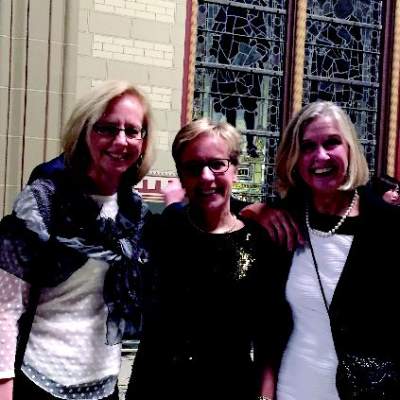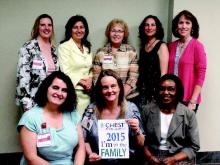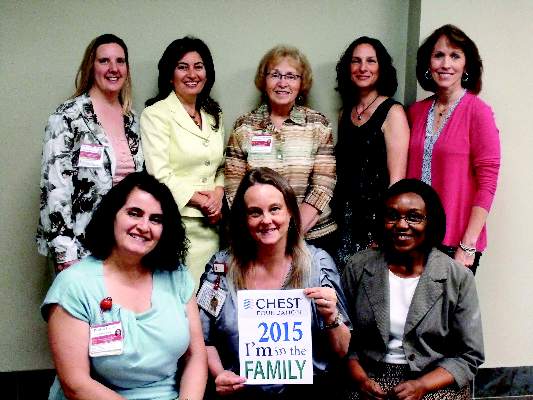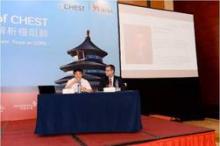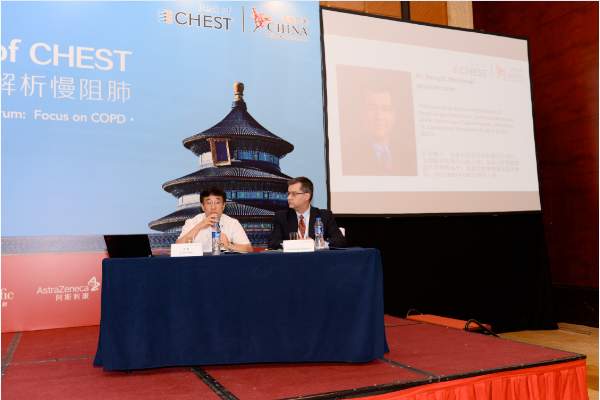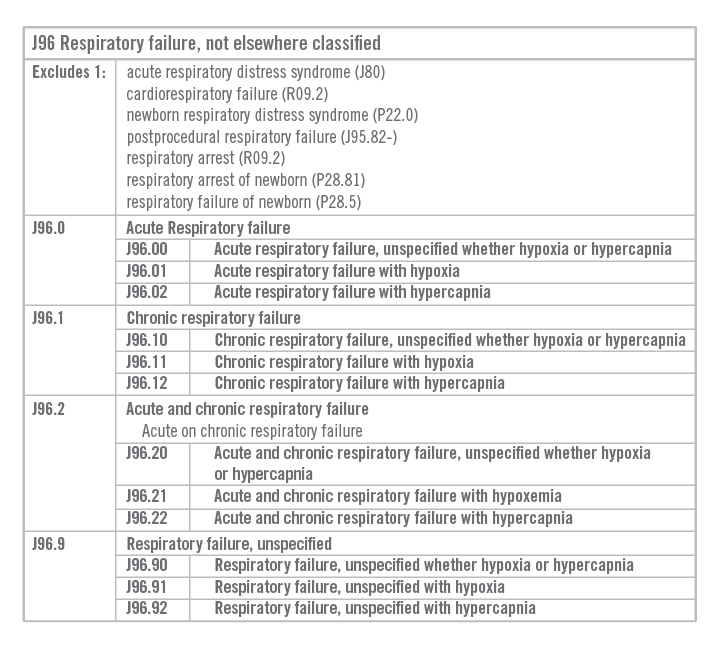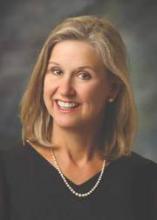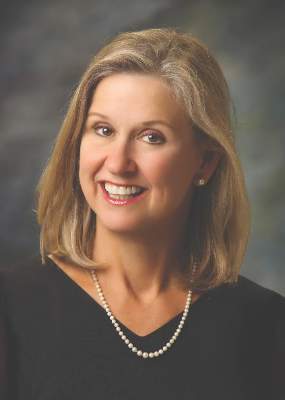User login
ERS International Congress 2015
Enjoying the ERS International Congress 2015 in Amsterdam (L-R): Canadian Thoracic Society President, Dr. Diane Lougheed; European Respiratory Society Immediate Past President, Dr. Elisabeth Bel; and new CHEST President, Dr. Barbara A. Phillips, FCCP.
Enjoying the ERS International Congress 2015 in Amsterdam (L-R): Canadian Thoracic Society President, Dr. Diane Lougheed; European Respiratory Society Immediate Past President, Dr. Elisabeth Bel; and new CHEST President, Dr. Barbara A. Phillips, FCCP.
Enjoying the ERS International Congress 2015 in Amsterdam (L-R): Canadian Thoracic Society President, Dr. Diane Lougheed; European Respiratory Society Immediate Past President, Dr. Elisabeth Bel; and new CHEST President, Dr. Barbara A. Phillips, FCCP.
CHEST Foundation Grants Seed Future Research
As CHEST 2015 wraps up, and the CHEST Foundation begins to award new grants to fund research in chest medicine, it’s important to check in with previous grant winners to see how their innovative projects have progressed.
One notable and inspiring CHEST Foundation grant recipient, Dr. Ghada Bourjeily, FCCP, turned her two $10,000 CHEST Foundation grants into a $2.8 million federally funded, interdisciplinary, team-based research program for women’s health.
“These grants were instrumental in helping my team,” Dr. Bourjelly stated when asked about the effects winning the grants had on her research. “Without the results from the CHEST Foundation grant-funded research, my team and I would have been unable to apply for federal funding. We were recently awarded about $2.8 million in federal funding.” Her projects, Differences in Respiratory Sleep Parameters of Pregnant and Nonpregnant Women, and Sleep-Disordered Breathing in Pregnant Women With Gestational Diabetes Mellitus: Prevalence and Mechanisms, both aimed at gaining a better understanding of sleep-disordered breathing during pregnancy. “I am extremely grateful to the CHEST Foundation for its generous support in helping launch our project and to the CHEST NetWorks and steering committees, which are helpful for guiding young physicians toward opportunities like CHEST Foundation grants, which help them succeed in their careers.”
The CHEST Foundation believes that a team-based approach to chest medicine research is a cornerstone for advancing lung health. Our grants support such team-based, interdisciplinary efforts, and we are excited to continue partnering with CHEST members on new clinical research and community-based projects in the upcoming grant cycle for 2016.
It is critical to acknowledge that the success of these projects is made possible by the support of members and friends in the chest medicine community who donate each year to the foundation’s Annual Fund. Become part of our Annual Fund Giving Club today by visiting chestnet.org/donate, and learn more about grant opportunities for 2016 by stopping by chestnet.org/grants. Thank you for your contributions and for your support of the CHEST Foundation’s mission to champion lung health.
Dr. Bourjelly is with the Women’s Medicine Collaborative through Miriam Hospital/Lifespan.
As CHEST 2015 wraps up, and the CHEST Foundation begins to award new grants to fund research in chest medicine, it’s important to check in with previous grant winners to see how their innovative projects have progressed.
One notable and inspiring CHEST Foundation grant recipient, Dr. Ghada Bourjeily, FCCP, turned her two $10,000 CHEST Foundation grants into a $2.8 million federally funded, interdisciplinary, team-based research program for women’s health.
“These grants were instrumental in helping my team,” Dr. Bourjelly stated when asked about the effects winning the grants had on her research. “Without the results from the CHEST Foundation grant-funded research, my team and I would have been unable to apply for federal funding. We were recently awarded about $2.8 million in federal funding.” Her projects, Differences in Respiratory Sleep Parameters of Pregnant and Nonpregnant Women, and Sleep-Disordered Breathing in Pregnant Women With Gestational Diabetes Mellitus: Prevalence and Mechanisms, both aimed at gaining a better understanding of sleep-disordered breathing during pregnancy. “I am extremely grateful to the CHEST Foundation for its generous support in helping launch our project and to the CHEST NetWorks and steering committees, which are helpful for guiding young physicians toward opportunities like CHEST Foundation grants, which help them succeed in their careers.”
The CHEST Foundation believes that a team-based approach to chest medicine research is a cornerstone for advancing lung health. Our grants support such team-based, interdisciplinary efforts, and we are excited to continue partnering with CHEST members on new clinical research and community-based projects in the upcoming grant cycle for 2016.
It is critical to acknowledge that the success of these projects is made possible by the support of members and friends in the chest medicine community who donate each year to the foundation’s Annual Fund. Become part of our Annual Fund Giving Club today by visiting chestnet.org/donate, and learn more about grant opportunities for 2016 by stopping by chestnet.org/grants. Thank you for your contributions and for your support of the CHEST Foundation’s mission to champion lung health.
Dr. Bourjelly is with the Women’s Medicine Collaborative through Miriam Hospital/Lifespan.
As CHEST 2015 wraps up, and the CHEST Foundation begins to award new grants to fund research in chest medicine, it’s important to check in with previous grant winners to see how their innovative projects have progressed.
One notable and inspiring CHEST Foundation grant recipient, Dr. Ghada Bourjeily, FCCP, turned her two $10,000 CHEST Foundation grants into a $2.8 million federally funded, interdisciplinary, team-based research program for women’s health.
“These grants were instrumental in helping my team,” Dr. Bourjelly stated when asked about the effects winning the grants had on her research. “Without the results from the CHEST Foundation grant-funded research, my team and I would have been unable to apply for federal funding. We were recently awarded about $2.8 million in federal funding.” Her projects, Differences in Respiratory Sleep Parameters of Pregnant and Nonpregnant Women, and Sleep-Disordered Breathing in Pregnant Women With Gestational Diabetes Mellitus: Prevalence and Mechanisms, both aimed at gaining a better understanding of sleep-disordered breathing during pregnancy. “I am extremely grateful to the CHEST Foundation for its generous support in helping launch our project and to the CHEST NetWorks and steering committees, which are helpful for guiding young physicians toward opportunities like CHEST Foundation grants, which help them succeed in their careers.”
The CHEST Foundation believes that a team-based approach to chest medicine research is a cornerstone for advancing lung health. Our grants support such team-based, interdisciplinary efforts, and we are excited to continue partnering with CHEST members on new clinical research and community-based projects in the upcoming grant cycle for 2016.
It is critical to acknowledge that the success of these projects is made possible by the support of members and friends in the chest medicine community who donate each year to the foundation’s Annual Fund. Become part of our Annual Fund Giving Club today by visiting chestnet.org/donate, and learn more about grant opportunities for 2016 by stopping by chestnet.org/grants. Thank you for your contributions and for your support of the CHEST Foundation’s mission to champion lung health.
Dr. Bourjelly is with the Women’s Medicine Collaborative through Miriam Hospital/Lifespan.
CHEST World Congress 2016 in Shanghai, China: Get Your Fill of the Latest Clinical Science, Authentic Cuisine
As you plan your trip to Shanghai for CHEST World Congress 2016, you are probably eagerly anticipating authentic Chinese cuisine. You may be imagining Chinese food as you know it in North America – buffets; fortune cookies; and small, white takeout boxes. Buffets actually are commonplace in Shanghai, but you likely won’t find a fortune cookie anywhere. We’re here to give you a rundown of what to expect from Chinese cuisine, but read this at your own risk. Your stomach may growl, and we can’t promise that your local Chinese restaurant will serve many of the authentic dishes featured below.
Let’s get started with the basics. Shanghai cooking is known for a heavy, highly flavorful sauce. Dishes favor sugar, soy sauce, and oil, and seafood is featured prominently. You may find it to be rather oily and sweet. Generally expect to find meals served as family-style, and soup is oftentimes served as the last course. Finally, tips aren’t needed, though there may be a service charge added to your bill at hotel restaurants.
Shanghai is most famous for its Shengjian Bao, fried soup dumplings. These dumplings are a thin dough wrapped around ground pork and a gelatinous soup. Yang’s Dumpling franchise is the most popular place to get this tasty snack or breakfast treat, but you can also find them at many other restaurants in Shanghai. Follow Chinese tradition, and save yourself from getting burned, by eating dumplings in this order:
• Place your dumpling on a spoon with help from your chopsticks.
• Bite off a small piece on top to make a hole.
• Blow and wait for the soup to cool.
• Slurp the soup inside.
• Dip into vinegar, if you wish.
• Eat the remainder of the dumpling.
Shanghai is also known for these popular street foods:
• Jianbing - These egg pancakes are served for breakfast by street vendors. The batter is made from mung bean flour, and crepes are topped with an egg or two, chopped pickled greens, scallions, and cilantro. Then spice is added with red bean, hoisin, and chili sauces.
• Hot Pot - Basic stock or spicy stock is offered with sides of thinly sliced raw meats, vegetables, and noodles.
• Chuanr - These skewers are made with lamb, chicken, beef, seafood like shellfish, and vegetarian options like eggplant and tofu. They are topped with cumin seeds, salt, sesame seeds or sesame oil, dried pepper flakes, and a spicy sauce.
If you’re looking for a more upscale dining experience, the travel site, Frommers, has recommendations. Here are a few recommended restaurants located at the luxurious development, Three on the Bund:
• Jean Georges - contemporary and light French fare.
• Whampoa Club - Classic Shanghai foods with a contemporary spin.
• Laris - A seafood restaurant with an Australian chef.
• New Heights - casual, more affordable bistro fare.
Whether you decide to fill up with eats from the street, or you sit down at a cafe or restaurant, we know you’ll find the cuisine you’re craving with one of Shanghai’s many dining options.
Similarly, you’ll get your fill of science at CHEST World Congress with assorted clinical education opportunities. When CHEST travels to Shanghai, April 15 - 17, 2016, you’ll have your choice of simulation-based education, case and problem-based sessions, and evidence-based medicine for clinical respirologists, intensive care physicians, and specialists in sleep medicine. Learn more at chestworldcongress2016.org.
As you plan your trip to Shanghai for CHEST World Congress 2016, you are probably eagerly anticipating authentic Chinese cuisine. You may be imagining Chinese food as you know it in North America – buffets; fortune cookies; and small, white takeout boxes. Buffets actually are commonplace in Shanghai, but you likely won’t find a fortune cookie anywhere. We’re here to give you a rundown of what to expect from Chinese cuisine, but read this at your own risk. Your stomach may growl, and we can’t promise that your local Chinese restaurant will serve many of the authentic dishes featured below.
Let’s get started with the basics. Shanghai cooking is known for a heavy, highly flavorful sauce. Dishes favor sugar, soy sauce, and oil, and seafood is featured prominently. You may find it to be rather oily and sweet. Generally expect to find meals served as family-style, and soup is oftentimes served as the last course. Finally, tips aren’t needed, though there may be a service charge added to your bill at hotel restaurants.
Shanghai is most famous for its Shengjian Bao, fried soup dumplings. These dumplings are a thin dough wrapped around ground pork and a gelatinous soup. Yang’s Dumpling franchise is the most popular place to get this tasty snack or breakfast treat, but you can also find them at many other restaurants in Shanghai. Follow Chinese tradition, and save yourself from getting burned, by eating dumplings in this order:
• Place your dumpling on a spoon with help from your chopsticks.
• Bite off a small piece on top to make a hole.
• Blow and wait for the soup to cool.
• Slurp the soup inside.
• Dip into vinegar, if you wish.
• Eat the remainder of the dumpling.
Shanghai is also known for these popular street foods:
• Jianbing - These egg pancakes are served for breakfast by street vendors. The batter is made from mung bean flour, and crepes are topped with an egg or two, chopped pickled greens, scallions, and cilantro. Then spice is added with red bean, hoisin, and chili sauces.
• Hot Pot - Basic stock or spicy stock is offered with sides of thinly sliced raw meats, vegetables, and noodles.
• Chuanr - These skewers are made with lamb, chicken, beef, seafood like shellfish, and vegetarian options like eggplant and tofu. They are topped with cumin seeds, salt, sesame seeds or sesame oil, dried pepper flakes, and a spicy sauce.
If you’re looking for a more upscale dining experience, the travel site, Frommers, has recommendations. Here are a few recommended restaurants located at the luxurious development, Three on the Bund:
• Jean Georges - contemporary and light French fare.
• Whampoa Club - Classic Shanghai foods with a contemporary spin.
• Laris - A seafood restaurant with an Australian chef.
• New Heights - casual, more affordable bistro fare.
Whether you decide to fill up with eats from the street, or you sit down at a cafe or restaurant, we know you’ll find the cuisine you’re craving with one of Shanghai’s many dining options.
Similarly, you’ll get your fill of science at CHEST World Congress with assorted clinical education opportunities. When CHEST travels to Shanghai, April 15 - 17, 2016, you’ll have your choice of simulation-based education, case and problem-based sessions, and evidence-based medicine for clinical respirologists, intensive care physicians, and specialists in sleep medicine. Learn more at chestworldcongress2016.org.
As you plan your trip to Shanghai for CHEST World Congress 2016, you are probably eagerly anticipating authentic Chinese cuisine. You may be imagining Chinese food as you know it in North America – buffets; fortune cookies; and small, white takeout boxes. Buffets actually are commonplace in Shanghai, but you likely won’t find a fortune cookie anywhere. We’re here to give you a rundown of what to expect from Chinese cuisine, but read this at your own risk. Your stomach may growl, and we can’t promise that your local Chinese restaurant will serve many of the authentic dishes featured below.
Let’s get started with the basics. Shanghai cooking is known for a heavy, highly flavorful sauce. Dishes favor sugar, soy sauce, and oil, and seafood is featured prominently. You may find it to be rather oily and sweet. Generally expect to find meals served as family-style, and soup is oftentimes served as the last course. Finally, tips aren’t needed, though there may be a service charge added to your bill at hotel restaurants.
Shanghai is most famous for its Shengjian Bao, fried soup dumplings. These dumplings are a thin dough wrapped around ground pork and a gelatinous soup. Yang’s Dumpling franchise is the most popular place to get this tasty snack or breakfast treat, but you can also find them at many other restaurants in Shanghai. Follow Chinese tradition, and save yourself from getting burned, by eating dumplings in this order:
• Place your dumpling on a spoon with help from your chopsticks.
• Bite off a small piece on top to make a hole.
• Blow and wait for the soup to cool.
• Slurp the soup inside.
• Dip into vinegar, if you wish.
• Eat the remainder of the dumpling.
Shanghai is also known for these popular street foods:
• Jianbing - These egg pancakes are served for breakfast by street vendors. The batter is made from mung bean flour, and crepes are topped with an egg or two, chopped pickled greens, scallions, and cilantro. Then spice is added with red bean, hoisin, and chili sauces.
• Hot Pot - Basic stock or spicy stock is offered with sides of thinly sliced raw meats, vegetables, and noodles.
• Chuanr - These skewers are made with lamb, chicken, beef, seafood like shellfish, and vegetarian options like eggplant and tofu. They are topped with cumin seeds, salt, sesame seeds or sesame oil, dried pepper flakes, and a spicy sauce.
If you’re looking for a more upscale dining experience, the travel site, Frommers, has recommendations. Here are a few recommended restaurants located at the luxurious development, Three on the Bund:
• Jean Georges - contemporary and light French fare.
• Whampoa Club - Classic Shanghai foods with a contemporary spin.
• Laris - A seafood restaurant with an Australian chef.
• New Heights - casual, more affordable bistro fare.
Whether you decide to fill up with eats from the street, or you sit down at a cafe or restaurant, we know you’ll find the cuisine you’re craving with one of Shanghai’s many dining options.
Similarly, you’ll get your fill of science at CHEST World Congress with assorted clinical education opportunities. When CHEST travels to Shanghai, April 15 - 17, 2016, you’ll have your choice of simulation-based education, case and problem-based sessions, and evidence-based medicine for clinical respirologists, intensive care physicians, and specialists in sleep medicine. Learn more at chestworldcongress2016.org.
ABIM Assessment 2020 Aligns with CHEST Educational Principles
The American Board of Internal Medicine (ABIM) recently released Assessment 2020, A Vision for Certification in Internal Medicine in 2020, developed by a commissioned task force to “develop a vision for the future of assessment for certification (initial and maintenance) in internal medicine and associated subspecialties.”
Assessment 2020 highlights three key recommendations that aim to reduce the burden of recertification, deliver more relevant assessments focused on practice-based skills, and recognize the value of specialization.
The Assessment 2020 recommendations include the following:
1. Replace the 10-Year Maintenance of Certification examination with more frequent, less burdensome assessments
2. Focus assessments on cognitive and technical skills
3. Recognize specialization
CHEST supports this effort to better align certification and recertification with the relevant practice of physicians and has long promoted the principles behind these recommendations. CHEST is the first medical society to receive accreditation from the Society for Simulation in Healthcare, and The CHEST Certificate of Completion (COC) program provides ongoing opportunity for learning and formative evaluation of knowledge and performance alongside rigorous assessment. CHEST is well-positioned and prepared to collaborate with ABIM and to create the next form of certification.
CHEST recognizes the important work of the Assessment 2020 Task Force in assembling a diverse interdisciplinary group of thought leaders to carry forward the discussion about assessment and certification and acknowledges that there is much work to be done to build consensus and increase the relevance and value of MOC.
We are interested in your feedback on this report and each of these recommendations. Please provide us with your comments at https://www.surveymonkey.com/r/FWHCCS5.
CHEST will incorporate your feedback into our future work with ABIM and will continue to inform you of any important changes to certification and recertification.
The American Board of Internal Medicine (ABIM) recently released Assessment 2020, A Vision for Certification in Internal Medicine in 2020, developed by a commissioned task force to “develop a vision for the future of assessment for certification (initial and maintenance) in internal medicine and associated subspecialties.”
Assessment 2020 highlights three key recommendations that aim to reduce the burden of recertification, deliver more relevant assessments focused on practice-based skills, and recognize the value of specialization.
The Assessment 2020 recommendations include the following:
1. Replace the 10-Year Maintenance of Certification examination with more frequent, less burdensome assessments
2. Focus assessments on cognitive and technical skills
3. Recognize specialization
CHEST supports this effort to better align certification and recertification with the relevant practice of physicians and has long promoted the principles behind these recommendations. CHEST is the first medical society to receive accreditation from the Society for Simulation in Healthcare, and The CHEST Certificate of Completion (COC) program provides ongoing opportunity for learning and formative evaluation of knowledge and performance alongside rigorous assessment. CHEST is well-positioned and prepared to collaborate with ABIM and to create the next form of certification.
CHEST recognizes the important work of the Assessment 2020 Task Force in assembling a diverse interdisciplinary group of thought leaders to carry forward the discussion about assessment and certification and acknowledges that there is much work to be done to build consensus and increase the relevance and value of MOC.
We are interested in your feedback on this report and each of these recommendations. Please provide us with your comments at https://www.surveymonkey.com/r/FWHCCS5.
CHEST will incorporate your feedback into our future work with ABIM and will continue to inform you of any important changes to certification and recertification.
The American Board of Internal Medicine (ABIM) recently released Assessment 2020, A Vision for Certification in Internal Medicine in 2020, developed by a commissioned task force to “develop a vision for the future of assessment for certification (initial and maintenance) in internal medicine and associated subspecialties.”
Assessment 2020 highlights three key recommendations that aim to reduce the burden of recertification, deliver more relevant assessments focused on practice-based skills, and recognize the value of specialization.
The Assessment 2020 recommendations include the following:
1. Replace the 10-Year Maintenance of Certification examination with more frequent, less burdensome assessments
2. Focus assessments on cognitive and technical skills
3. Recognize specialization
CHEST supports this effort to better align certification and recertification with the relevant practice of physicians and has long promoted the principles behind these recommendations. CHEST is the first medical society to receive accreditation from the Society for Simulation in Healthcare, and The CHEST Certificate of Completion (COC) program provides ongoing opportunity for learning and formative evaluation of knowledge and performance alongside rigorous assessment. CHEST is well-positioned and prepared to collaborate with ABIM and to create the next form of certification.
CHEST recognizes the important work of the Assessment 2020 Task Force in assembling a diverse interdisciplinary group of thought leaders to carry forward the discussion about assessment and certification and acknowledges that there is much work to be done to build consensus and increase the relevance and value of MOC.
We are interested in your feedback on this report and each of these recommendations. Please provide us with your comments at https://www.surveymonkey.com/r/FWHCCS5.
CHEST will incorporate your feedback into our future work with ABIM and will continue to inform you of any important changes to certification and recertification.
CHEST Around the Globe
CHEST Collaborates With Chinese Physicians to Advance Pulmonary and Critical Care Medicine
With the goal of advancing our educational mission and our profession, CHEST continues to expand its collaboration with Chinese leaders in pulmonary, critical care, and sleep medicine in a variety of venues.
In July 2015, faculty representing CHEST and the Chinese Thoracic Society worked together to conduct the First Sino-American Respiratory Forum, a 2-day program in Beijing that focused on clinical features and management of chronic obstructive pulmonary disease (COPD), sharing knowledge and experience among Chinese and CHEST faculty. We plan for this to be an annual event with a different general topic each year.
Our work to introduce pulmonary and critical care medicine (PCCM) as a new subspecialty in China is moving ahead; the first step is to establish fellowship training programs that use a common curriculum across 12 academic sites in China. In collaboration with our Chinese colleagues, eight programs based in Beijing, Shanghai, Changsha, Chengdu, and Guangzhou have been activated, with four more joining in the coming year. Each of the eight active sites were visited over the last year by members of the CHEST PCCM Steering Committee, chaired by Darcy D. Marciniuk, MD, FCCP, a Past President of CHEST. These visits are intended to observe the programs in action, to monitor progress with implementation, and to offer feedback on how to continue to improve the quality of training. We anticipate visiting the sites annually as part of a continuing evaluation process, offering interim assessments with audit of adherence to program requirements and fellows’ knowledge. We look forward to the first “graduating class” in the fall of 2017.
Finally, plans are proceeding rapidly for CHEST World Congress 2016, April 15-17, in Shanghai. With the support of the Chinese Thoracic Society, this will be another outstanding CHEST educational experience for the global professional community. Cochaired by Dr. Marciniuk and Chen Wang, MD, PhD, FCCP, President of the Chinese Thoracic Society, the program has been developed by an international committee, designed to fulfill the goal of delivering practical clinical education in formats that include plenary sessions by global experts, panel discussions, interactive case-based sessions, and hands-on simulation activities.
We look forward to keeping you informed of our progress, and hope you will join us in Shanghai in April 2016.
CHEST Collaborates With Chinese Physicians to Advance Pulmonary and Critical Care Medicine
With the goal of advancing our educational mission and our profession, CHEST continues to expand its collaboration with Chinese leaders in pulmonary, critical care, and sleep medicine in a variety of venues.
In July 2015, faculty representing CHEST and the Chinese Thoracic Society worked together to conduct the First Sino-American Respiratory Forum, a 2-day program in Beijing that focused on clinical features and management of chronic obstructive pulmonary disease (COPD), sharing knowledge and experience among Chinese and CHEST faculty. We plan for this to be an annual event with a different general topic each year.
Our work to introduce pulmonary and critical care medicine (PCCM) as a new subspecialty in China is moving ahead; the first step is to establish fellowship training programs that use a common curriculum across 12 academic sites in China. In collaboration with our Chinese colleagues, eight programs based in Beijing, Shanghai, Changsha, Chengdu, and Guangzhou have been activated, with four more joining in the coming year. Each of the eight active sites were visited over the last year by members of the CHEST PCCM Steering Committee, chaired by Darcy D. Marciniuk, MD, FCCP, a Past President of CHEST. These visits are intended to observe the programs in action, to monitor progress with implementation, and to offer feedback on how to continue to improve the quality of training. We anticipate visiting the sites annually as part of a continuing evaluation process, offering interim assessments with audit of adherence to program requirements and fellows’ knowledge. We look forward to the first “graduating class” in the fall of 2017.
Finally, plans are proceeding rapidly for CHEST World Congress 2016, April 15-17, in Shanghai. With the support of the Chinese Thoracic Society, this will be another outstanding CHEST educational experience for the global professional community. Cochaired by Dr. Marciniuk and Chen Wang, MD, PhD, FCCP, President of the Chinese Thoracic Society, the program has been developed by an international committee, designed to fulfill the goal of delivering practical clinical education in formats that include plenary sessions by global experts, panel discussions, interactive case-based sessions, and hands-on simulation activities.
We look forward to keeping you informed of our progress, and hope you will join us in Shanghai in April 2016.
CHEST Collaborates With Chinese Physicians to Advance Pulmonary and Critical Care Medicine
With the goal of advancing our educational mission and our profession, CHEST continues to expand its collaboration with Chinese leaders in pulmonary, critical care, and sleep medicine in a variety of venues.
In July 2015, faculty representing CHEST and the Chinese Thoracic Society worked together to conduct the First Sino-American Respiratory Forum, a 2-day program in Beijing that focused on clinical features and management of chronic obstructive pulmonary disease (COPD), sharing knowledge and experience among Chinese and CHEST faculty. We plan for this to be an annual event with a different general topic each year.
Our work to introduce pulmonary and critical care medicine (PCCM) as a new subspecialty in China is moving ahead; the first step is to establish fellowship training programs that use a common curriculum across 12 academic sites in China. In collaboration with our Chinese colleagues, eight programs based in Beijing, Shanghai, Changsha, Chengdu, and Guangzhou have been activated, with four more joining in the coming year. Each of the eight active sites were visited over the last year by members of the CHEST PCCM Steering Committee, chaired by Darcy D. Marciniuk, MD, FCCP, a Past President of CHEST. These visits are intended to observe the programs in action, to monitor progress with implementation, and to offer feedback on how to continue to improve the quality of training. We anticipate visiting the sites annually as part of a continuing evaluation process, offering interim assessments with audit of adherence to program requirements and fellows’ knowledge. We look forward to the first “graduating class” in the fall of 2017.
Finally, plans are proceeding rapidly for CHEST World Congress 2016, April 15-17, in Shanghai. With the support of the Chinese Thoracic Society, this will be another outstanding CHEST educational experience for the global professional community. Cochaired by Dr. Marciniuk and Chen Wang, MD, PhD, FCCP, President of the Chinese Thoracic Society, the program has been developed by an international committee, designed to fulfill the goal of delivering practical clinical education in formats that include plenary sessions by global experts, panel discussions, interactive case-based sessions, and hands-on simulation activities.
We look forward to keeping you informed of our progress, and hope you will join us in Shanghai in April 2016.
Common ICD-10 Codes that will keep you awake at night!
This month, we present a couple of code categories that will become familiar to ICU doctors. This includes some of the codes for respiratory failure and for sepsis.
While you can find additional codes in the ICD-10-CM Official Guidelines for Coding and Reporting available at http://www.cms.gov/Medicare/Coding/ICD10/2015-ICD-10-CM-and-GEMs.html that are pertinent to critical care medicine, these codes also serve to reiterate a couple of points. First, in the J96 codes for respiratory failure, you see a number of “Excludes1” codes. Remember that this means that a J96 category code MAY NOT be used if you have also chosen one of the excludes1 codes.
A type 1 Excludes note is a pure excludes note. It means “NOT CODED HERE!” An Excludes1 note indicates that the code excluded should never be used at the same time as the code above the Excludes1 note. An Excludes1 is used when two conditions cannot occur together, such as a congenital form vs. an acquired form of the same condition.
In the R65 category with the SIRS/Sepsis codes, you will notice the “code first” direction. This instructs the coder to use another code describing the cause of the SIRS/Sepsis prior to using a R65 category code. In addition, there is a “code also” direction, which instructs the coder to add a code for any associated organ dysfunction. These instructions enhance the specificity of the coding process.
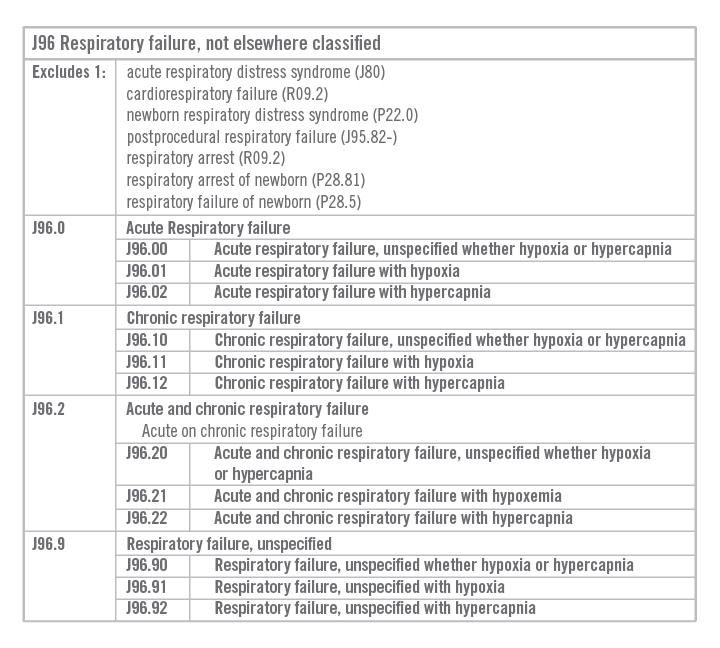
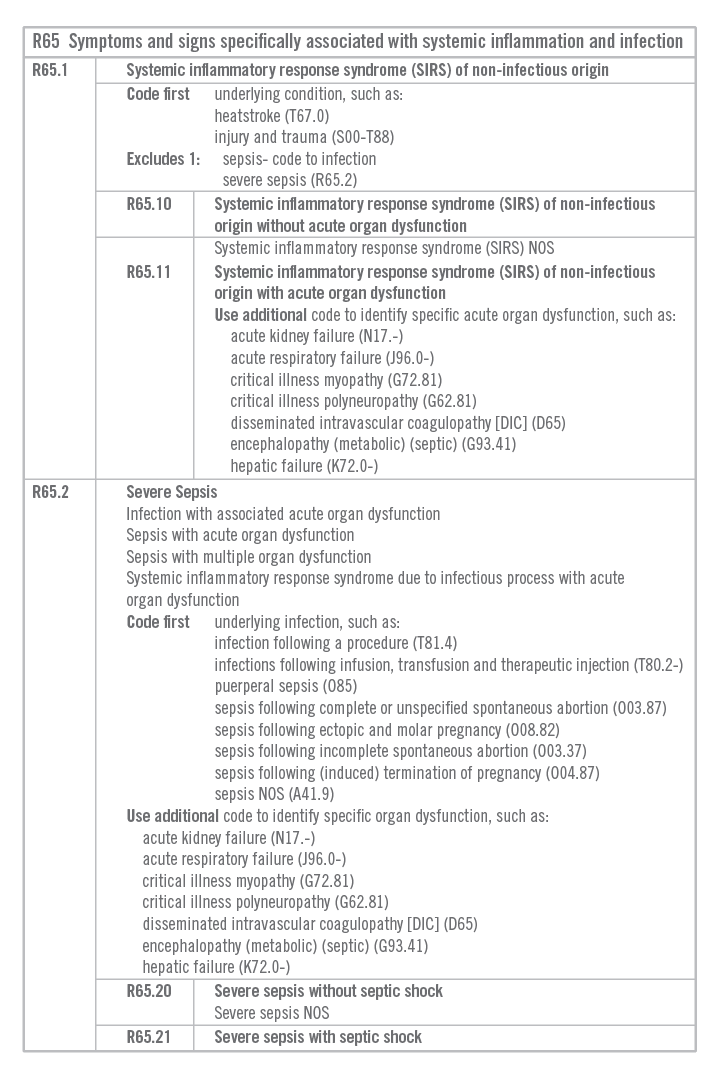
This month, we present a couple of code categories that will become familiar to ICU doctors. This includes some of the codes for respiratory failure and for sepsis.
While you can find additional codes in the ICD-10-CM Official Guidelines for Coding and Reporting available at http://www.cms.gov/Medicare/Coding/ICD10/2015-ICD-10-CM-and-GEMs.html that are pertinent to critical care medicine, these codes also serve to reiterate a couple of points. First, in the J96 codes for respiratory failure, you see a number of “Excludes1” codes. Remember that this means that a J96 category code MAY NOT be used if you have also chosen one of the excludes1 codes.
A type 1 Excludes note is a pure excludes note. It means “NOT CODED HERE!” An Excludes1 note indicates that the code excluded should never be used at the same time as the code above the Excludes1 note. An Excludes1 is used when two conditions cannot occur together, such as a congenital form vs. an acquired form of the same condition.
In the R65 category with the SIRS/Sepsis codes, you will notice the “code first” direction. This instructs the coder to use another code describing the cause of the SIRS/Sepsis prior to using a R65 category code. In addition, there is a “code also” direction, which instructs the coder to add a code for any associated organ dysfunction. These instructions enhance the specificity of the coding process.


This month, we present a couple of code categories that will become familiar to ICU doctors. This includes some of the codes for respiratory failure and for sepsis.
While you can find additional codes in the ICD-10-CM Official Guidelines for Coding and Reporting available at http://www.cms.gov/Medicare/Coding/ICD10/2015-ICD-10-CM-and-GEMs.html that are pertinent to critical care medicine, these codes also serve to reiterate a couple of points. First, in the J96 codes for respiratory failure, you see a number of “Excludes1” codes. Remember that this means that a J96 category code MAY NOT be used if you have also chosen one of the excludes1 codes.
A type 1 Excludes note is a pure excludes note. It means “NOT CODED HERE!” An Excludes1 note indicates that the code excluded should never be used at the same time as the code above the Excludes1 note. An Excludes1 is used when two conditions cannot occur together, such as a congenital form vs. an acquired form of the same condition.
In the R65 category with the SIRS/Sepsis codes, you will notice the “code first” direction. This instructs the coder to use another code describing the cause of the SIRS/Sepsis prior to using a R65 category code. In addition, there is a “code also” direction, which instructs the coder to add a code for any associated organ dysfunction. These instructions enhance the specificity of the coding process.


This Month in CHEST: Editor’s Picks
EDITORIAL
A Paradigm Shift in the Treatment of Central Sleep Apnea in Heart Failure. By Drs. R. Mehra and D. J. Gottlieb.
POINT AND COUNTERPOINT
Should Childhood Vaccination Against Measles Be a Mandatory Requirement for Attending School?
Yes – Drs. R. D. Silverman and K. S. Hendrix
No – Drs. P Schroder-Back and K. Martakis
ORIGINAL RESEARCH
Dedicated Severe Asthma Services Improve Health-Care Use and Quality of Life. By Dr. D. Gibeon, et al.
Will Nonasthmatic Eosinophilic Bronchitis Develop Into Chronic Airway Obstruction? A Prospective, Observational Study. By Dr. K. Lai, et al.
The Impact of Visceral Pleural Invasion in Node-Negative Non–small Cell Lung Cancer: A Systematic Review and Meta-analysis. By Dr. L. Jiang, et al.
EDITORIAL
A Paradigm Shift in the Treatment of Central Sleep Apnea in Heart Failure. By Drs. R. Mehra and D. J. Gottlieb.
POINT AND COUNTERPOINT
Should Childhood Vaccination Against Measles Be a Mandatory Requirement for Attending School?
Yes – Drs. R. D. Silverman and K. S. Hendrix
No – Drs. P Schroder-Back and K. Martakis
ORIGINAL RESEARCH
Dedicated Severe Asthma Services Improve Health-Care Use and Quality of Life. By Dr. D. Gibeon, et al.
Will Nonasthmatic Eosinophilic Bronchitis Develop Into Chronic Airway Obstruction? A Prospective, Observational Study. By Dr. K. Lai, et al.
The Impact of Visceral Pleural Invasion in Node-Negative Non–small Cell Lung Cancer: A Systematic Review and Meta-analysis. By Dr. L. Jiang, et al.
EDITORIAL
A Paradigm Shift in the Treatment of Central Sleep Apnea in Heart Failure. By Drs. R. Mehra and D. J. Gottlieb.
POINT AND COUNTERPOINT
Should Childhood Vaccination Against Measles Be a Mandatory Requirement for Attending School?
Yes – Drs. R. D. Silverman and K. S. Hendrix
No – Drs. P Schroder-Back and K. Martakis
ORIGINAL RESEARCH
Dedicated Severe Asthma Services Improve Health-Care Use and Quality of Life. By Dr. D. Gibeon, et al.
Will Nonasthmatic Eosinophilic Bronchitis Develop Into Chronic Airway Obstruction? A Prospective, Observational Study. By Dr. K. Lai, et al.
The Impact of Visceral Pleural Invasion in Node-Negative Non–small Cell Lung Cancer: A Systematic Review and Meta-analysis. By Dr. L. Jiang, et al.
Join the Annual Fund Giving Club
With CHEST 2015 quickly approaching, do not miss the opportunity to join your colleagues being recognized on the popular and highly visible Donor Wall of Honor. The wall is more than just a listing of donor names; it is a way you can show other members that you made a commitment to strengthen your foundation.
As an Annual Fund Giving Club member, you will enjoy a great number of recognition benefits, including access to a special donor lounge at the meeting; recognition for supporting the foundation in CHEST and CHEST Foundation publications, on our website, and on the Donor Wall of Honor; as well as receipt of a foundation donor pin, ribbon, and a special gift.
Thank you for helping lead this organization in so many ways, and we would be grateful to have your philanthropic support of the CHEST Foundation.
To continue to foster a culture of giving, please visit www.chestnet.org/donate to make your online gift, or fill out and mail the donor envelope that is inside your summer edition of the Donor Spotlight.
With CHEST 2015 quickly approaching, do not miss the opportunity to join your colleagues being recognized on the popular and highly visible Donor Wall of Honor. The wall is more than just a listing of donor names; it is a way you can show other members that you made a commitment to strengthen your foundation.
As an Annual Fund Giving Club member, you will enjoy a great number of recognition benefits, including access to a special donor lounge at the meeting; recognition for supporting the foundation in CHEST and CHEST Foundation publications, on our website, and on the Donor Wall of Honor; as well as receipt of a foundation donor pin, ribbon, and a special gift.
Thank you for helping lead this organization in so many ways, and we would be grateful to have your philanthropic support of the CHEST Foundation.
To continue to foster a culture of giving, please visit www.chestnet.org/donate to make your online gift, or fill out and mail the donor envelope that is inside your summer edition of the Donor Spotlight.
With CHEST 2015 quickly approaching, do not miss the opportunity to join your colleagues being recognized on the popular and highly visible Donor Wall of Honor. The wall is more than just a listing of donor names; it is a way you can show other members that you made a commitment to strengthen your foundation.
As an Annual Fund Giving Club member, you will enjoy a great number of recognition benefits, including access to a special donor lounge at the meeting; recognition for supporting the foundation in CHEST and CHEST Foundation publications, on our website, and on the Donor Wall of Honor; as well as receipt of a foundation donor pin, ribbon, and a special gift.
Thank you for helping lead this organization in so many ways, and we would be grateful to have your philanthropic support of the CHEST Foundation.
To continue to foster a culture of giving, please visit www.chestnet.org/donate to make your online gift, or fill out and mail the donor envelope that is inside your summer edition of the Donor Spotlight.
Getting to know our incoming CHEST President
Dr. Barbara A. Phillips, MSPH, FCCP, will be welcomed as CHEST’s new President during the CHEST 2015 Annual Meeting in Montréal next month. She is a Professor of Pulmonary, Critical Care, and Sleep Medicine in the Department of Internal Medicine and Medical Director, Sleep Laboratory at the University of Kentucky College of Medicine. She is board-certified in internal medicine, pulmonary medicine, and sleep medicine.
After joining CHEST as an affiliate member in 1982, Dr. Phillips advanced to Fellow in 1983. She became a member of the Sleep Medicine NetWork and a CHEST Governor for Kentucky. She has chaired the Sleep Institute and is Deputy Editor, SEEK Editorial Board Sleep Medicine (Second and Third Editions). Dr. Phillips chaired the National Sleep Foundation and has served on the Boards of the American Lung Association, the American Academy of Sleep Medicine, and the American Board of Sleep Medicine. Dr. Phillips received a Sleep Academic Award from the National Institutes of Health and was presented with the College Medalist Award at CHEST 2013. Dr. Phillips’ research interests are effects of sleep apnea on performance and outcomes, genetic risk factors for sleep apnea, nonpharmacologic treatment of sleep apnea, and sleep in aging.
We asked Dr. Phillips for some thoughts on her upcoming CHEST presidency.
1. What would you like to accomplish as President of CHEST?
I’d like to help the organization continue its remarkable growth and modernization. In the past few years, we have expanded our mission and membership, built new headquarters, developed an empowered and effective Board, launched a new take on global meetings with CHEST World Congress (come to Shanghai in April!), brought our technology infrastructure up to speed, undergone a rebranding process, and seen remarkable growth in the strength of our journal. That’s a lot! I personally don’t have any great new projects planned beyond what we’ve outlined in our strategic plan that runs through 2017; I just want to make sure we stay on course, ensure further diversification of our staff and membership, and continue to fulfill our ambitious mission.
2. What do you consider to be the greatest strength of CHEST, and how will you build upon this during your Presidency?
Our greatest strength lies with our talented human resources, both members and staff, who are committing to ensuring that CHEST remains the global (or as I like to say, “intergalactic”) leader in pulmonary, critical care, and sleep medicine education.
3. What are some challenges facing CHEST, and how will you address these challenges?
Communication, capacity, and competition.
CHEST is a large organization with many moving parts, and excellent, timely communication between our leaders, members, and staff is an important challenge for us.
In order to achieve our mission, “To champion the prevention, diagnosis, and treatment of chest diseases through education, communication, and research,” we need boots on the ground. CHEST is working to build capacity among both membership and staff to take us to the next level.
Competition for members is also a significant challenge for CHEST and for medical organizations in general. For example, in the 1950s, about 75% of US physicians were American Medical Association (AMA) members. That percentage has steadily decreased over the years, to about 15% today. At CHEST, we’re pleased to be able to say that we have 85% of US physicians specializing in pulmonary and critical care as members, plus nearly 50% of those in sleep medicine and pediatric pulmonology. But there is no cause for complacency. Busy professionals will only join organizations that are relevant and helpful to their lives. CHEST strives to meet that challenge.
4. And finally, what is your charge to the members and new Fellows of CHEST?
First, WELCOME! Second, please get involved. Join a NetWork (or two). Connect with other members through the e-Community. Attend the annual meeting. Submit your research and case reports. Organize a session submission. Volunteer for a committee. And please come meet us. We want to know you!
Dr. Barbara A. Phillips, MSPH, FCCP, will be welcomed as CHEST’s new President during the CHEST 2015 Annual Meeting in Montréal next month. She is a Professor of Pulmonary, Critical Care, and Sleep Medicine in the Department of Internal Medicine and Medical Director, Sleep Laboratory at the University of Kentucky College of Medicine. She is board-certified in internal medicine, pulmonary medicine, and sleep medicine.
After joining CHEST as an affiliate member in 1982, Dr. Phillips advanced to Fellow in 1983. She became a member of the Sleep Medicine NetWork and a CHEST Governor for Kentucky. She has chaired the Sleep Institute and is Deputy Editor, SEEK Editorial Board Sleep Medicine (Second and Third Editions). Dr. Phillips chaired the National Sleep Foundation and has served on the Boards of the American Lung Association, the American Academy of Sleep Medicine, and the American Board of Sleep Medicine. Dr. Phillips received a Sleep Academic Award from the National Institutes of Health and was presented with the College Medalist Award at CHEST 2013. Dr. Phillips’ research interests are effects of sleep apnea on performance and outcomes, genetic risk factors for sleep apnea, nonpharmacologic treatment of sleep apnea, and sleep in aging.
We asked Dr. Phillips for some thoughts on her upcoming CHEST presidency.
1. What would you like to accomplish as President of CHEST?
I’d like to help the organization continue its remarkable growth and modernization. In the past few years, we have expanded our mission and membership, built new headquarters, developed an empowered and effective Board, launched a new take on global meetings with CHEST World Congress (come to Shanghai in April!), brought our technology infrastructure up to speed, undergone a rebranding process, and seen remarkable growth in the strength of our journal. That’s a lot! I personally don’t have any great new projects planned beyond what we’ve outlined in our strategic plan that runs through 2017; I just want to make sure we stay on course, ensure further diversification of our staff and membership, and continue to fulfill our ambitious mission.
2. What do you consider to be the greatest strength of CHEST, and how will you build upon this during your Presidency?
Our greatest strength lies with our talented human resources, both members and staff, who are committing to ensuring that CHEST remains the global (or as I like to say, “intergalactic”) leader in pulmonary, critical care, and sleep medicine education.
3. What are some challenges facing CHEST, and how will you address these challenges?
Communication, capacity, and competition.
CHEST is a large organization with many moving parts, and excellent, timely communication between our leaders, members, and staff is an important challenge for us.
In order to achieve our mission, “To champion the prevention, diagnosis, and treatment of chest diseases through education, communication, and research,” we need boots on the ground. CHEST is working to build capacity among both membership and staff to take us to the next level.
Competition for members is also a significant challenge for CHEST and for medical organizations in general. For example, in the 1950s, about 75% of US physicians were American Medical Association (AMA) members. That percentage has steadily decreased over the years, to about 15% today. At CHEST, we’re pleased to be able to say that we have 85% of US physicians specializing in pulmonary and critical care as members, plus nearly 50% of those in sleep medicine and pediatric pulmonology. But there is no cause for complacency. Busy professionals will only join organizations that are relevant and helpful to their lives. CHEST strives to meet that challenge.
4. And finally, what is your charge to the members and new Fellows of CHEST?
First, WELCOME! Second, please get involved. Join a NetWork (or two). Connect with other members through the e-Community. Attend the annual meeting. Submit your research and case reports. Organize a session submission. Volunteer for a committee. And please come meet us. We want to know you!
Dr. Barbara A. Phillips, MSPH, FCCP, will be welcomed as CHEST’s new President during the CHEST 2015 Annual Meeting in Montréal next month. She is a Professor of Pulmonary, Critical Care, and Sleep Medicine in the Department of Internal Medicine and Medical Director, Sleep Laboratory at the University of Kentucky College of Medicine. She is board-certified in internal medicine, pulmonary medicine, and sleep medicine.
After joining CHEST as an affiliate member in 1982, Dr. Phillips advanced to Fellow in 1983. She became a member of the Sleep Medicine NetWork and a CHEST Governor for Kentucky. She has chaired the Sleep Institute and is Deputy Editor, SEEK Editorial Board Sleep Medicine (Second and Third Editions). Dr. Phillips chaired the National Sleep Foundation and has served on the Boards of the American Lung Association, the American Academy of Sleep Medicine, and the American Board of Sleep Medicine. Dr. Phillips received a Sleep Academic Award from the National Institutes of Health and was presented with the College Medalist Award at CHEST 2013. Dr. Phillips’ research interests are effects of sleep apnea on performance and outcomes, genetic risk factors for sleep apnea, nonpharmacologic treatment of sleep apnea, and sleep in aging.
We asked Dr. Phillips for some thoughts on her upcoming CHEST presidency.
1. What would you like to accomplish as President of CHEST?
I’d like to help the organization continue its remarkable growth and modernization. In the past few years, we have expanded our mission and membership, built new headquarters, developed an empowered and effective Board, launched a new take on global meetings with CHEST World Congress (come to Shanghai in April!), brought our technology infrastructure up to speed, undergone a rebranding process, and seen remarkable growth in the strength of our journal. That’s a lot! I personally don’t have any great new projects planned beyond what we’ve outlined in our strategic plan that runs through 2017; I just want to make sure we stay on course, ensure further diversification of our staff and membership, and continue to fulfill our ambitious mission.
2. What do you consider to be the greatest strength of CHEST, and how will you build upon this during your Presidency?
Our greatest strength lies with our talented human resources, both members and staff, who are committing to ensuring that CHEST remains the global (or as I like to say, “intergalactic”) leader in pulmonary, critical care, and sleep medicine education.
3. What are some challenges facing CHEST, and how will you address these challenges?
Communication, capacity, and competition.
CHEST is a large organization with many moving parts, and excellent, timely communication between our leaders, members, and staff is an important challenge for us.
In order to achieve our mission, “To champion the prevention, diagnosis, and treatment of chest diseases through education, communication, and research,” we need boots on the ground. CHEST is working to build capacity among both membership and staff to take us to the next level.
Competition for members is also a significant challenge for CHEST and for medical organizations in general. For example, in the 1950s, about 75% of US physicians were American Medical Association (AMA) members. That percentage has steadily decreased over the years, to about 15% today. At CHEST, we’re pleased to be able to say that we have 85% of US physicians specializing in pulmonary and critical care as members, plus nearly 50% of those in sleep medicine and pediatric pulmonology. But there is no cause for complacency. Busy professionals will only join organizations that are relevant and helpful to their lives. CHEST strives to meet that challenge.
4. And finally, what is your charge to the members and new Fellows of CHEST?
First, WELCOME! Second, please get involved. Join a NetWork (or two). Connect with other members through the e-Community. Attend the annual meeting. Submit your research and case reports. Organize a session submission. Volunteer for a committee. And please come meet us. We want to know you!
CHEST 2015: Don’t miss cutting-edge education or Montréal’s neighborhoods
When you travel to Montréal to attend the CHEST Annual Meeting 2015, October 24 to 28, you don’t want to miss a minute of the cutting-edge education sessions and simulation training—but you also won’t want to ignore the great city where you will be staying. Knowing that your time may be limited, we came up with a list of the best restaurants near the convention center and local neighborhoods that you can explore within the short breaks in your schedule.
Enjoy a walk or grab a cab to enjoy these nearby eats:
• Pho Bang New York (3-minute walk): this casual restaurant offers Vietnamese soups and buns.
• Olive & Gourmando (6-minute walk): you’ll enjoy creative sandwiches, local beer and wine selections, and pastries galore!
• March 27 (11-minute walk): this French bistro serves small plates and is known for its tartare.
• Mai Xiang Yuan (5-minute walk): located in Chinatown, this restaurant serves up delicious dumplings and authentic Chinese cuisine.
Looking for a quick excursion during a break in your education schedule? These nearby neighborhoods will offer you a glimpse into Montréal:
• Visit Old Montréal, located only a few minutes walk from the convention center. Old Montréal offers a glimpse into Montréal’s history blended with hip, urban hotspots. Complete with cobblestone paths, chic art galleries, 19th century architecture, and trendy boutiques, this neighborhood will keep you busy during your spare time. Learn more about Old Montréal from our earlier article published in the April edition of CHEST Physician.
• Visit Chinatown. Also located minutes away from the convention center, this neighborhood is filled with Asian restaurants, food markets, and convenience stores.
We know you’ll enjoy Montréal and CHEST 2015’s extensive educational offerings. You’ll receive relevant updates on patient care, and practice management strategies will offer insight, perspective, and inspiration you can seamlessly incorporate into your practice to stay at the forefront of clinical chest medicine.
Begin planning your trip to Montréal now with help from Montréal’s tourism website, www.tourisme-montreal.org. Start planning your learning itinerary with the CHEST 2015 mobile-ready website or apps for iOS or Android. Find links to the mobile-ready website and apps, and learn more about CHEST 2015 at chestmeeting.chestnet.org.
When you travel to Montréal to attend the CHEST Annual Meeting 2015, October 24 to 28, you don’t want to miss a minute of the cutting-edge education sessions and simulation training—but you also won’t want to ignore the great city where you will be staying. Knowing that your time may be limited, we came up with a list of the best restaurants near the convention center and local neighborhoods that you can explore within the short breaks in your schedule.
Enjoy a walk or grab a cab to enjoy these nearby eats:
• Pho Bang New York (3-minute walk): this casual restaurant offers Vietnamese soups and buns.
• Olive & Gourmando (6-minute walk): you’ll enjoy creative sandwiches, local beer and wine selections, and pastries galore!
• March 27 (11-minute walk): this French bistro serves small plates and is known for its tartare.
• Mai Xiang Yuan (5-minute walk): located in Chinatown, this restaurant serves up delicious dumplings and authentic Chinese cuisine.
Looking for a quick excursion during a break in your education schedule? These nearby neighborhoods will offer you a glimpse into Montréal:
• Visit Old Montréal, located only a few minutes walk from the convention center. Old Montréal offers a glimpse into Montréal’s history blended with hip, urban hotspots. Complete with cobblestone paths, chic art galleries, 19th century architecture, and trendy boutiques, this neighborhood will keep you busy during your spare time. Learn more about Old Montréal from our earlier article published in the April edition of CHEST Physician.
• Visit Chinatown. Also located minutes away from the convention center, this neighborhood is filled with Asian restaurants, food markets, and convenience stores.
We know you’ll enjoy Montréal and CHEST 2015’s extensive educational offerings. You’ll receive relevant updates on patient care, and practice management strategies will offer insight, perspective, and inspiration you can seamlessly incorporate into your practice to stay at the forefront of clinical chest medicine.
Begin planning your trip to Montréal now with help from Montréal’s tourism website, www.tourisme-montreal.org. Start planning your learning itinerary with the CHEST 2015 mobile-ready website or apps for iOS or Android. Find links to the mobile-ready website and apps, and learn more about CHEST 2015 at chestmeeting.chestnet.org.
When you travel to Montréal to attend the CHEST Annual Meeting 2015, October 24 to 28, you don’t want to miss a minute of the cutting-edge education sessions and simulation training—but you also won’t want to ignore the great city where you will be staying. Knowing that your time may be limited, we came up with a list of the best restaurants near the convention center and local neighborhoods that you can explore within the short breaks in your schedule.
Enjoy a walk or grab a cab to enjoy these nearby eats:
• Pho Bang New York (3-minute walk): this casual restaurant offers Vietnamese soups and buns.
• Olive & Gourmando (6-minute walk): you’ll enjoy creative sandwiches, local beer and wine selections, and pastries galore!
• March 27 (11-minute walk): this French bistro serves small plates and is known for its tartare.
• Mai Xiang Yuan (5-minute walk): located in Chinatown, this restaurant serves up delicious dumplings and authentic Chinese cuisine.
Looking for a quick excursion during a break in your education schedule? These nearby neighborhoods will offer you a glimpse into Montréal:
• Visit Old Montréal, located only a few minutes walk from the convention center. Old Montréal offers a glimpse into Montréal’s history blended with hip, urban hotspots. Complete with cobblestone paths, chic art galleries, 19th century architecture, and trendy boutiques, this neighborhood will keep you busy during your spare time. Learn more about Old Montréal from our earlier article published in the April edition of CHEST Physician.
• Visit Chinatown. Also located minutes away from the convention center, this neighborhood is filled with Asian restaurants, food markets, and convenience stores.
We know you’ll enjoy Montréal and CHEST 2015’s extensive educational offerings. You’ll receive relevant updates on patient care, and practice management strategies will offer insight, perspective, and inspiration you can seamlessly incorporate into your practice to stay at the forefront of clinical chest medicine.
Begin planning your trip to Montréal now with help from Montréal’s tourism website, www.tourisme-montreal.org. Start planning your learning itinerary with the CHEST 2015 mobile-ready website or apps for iOS or Android. Find links to the mobile-ready website and apps, and learn more about CHEST 2015 at chestmeeting.chestnet.org.

